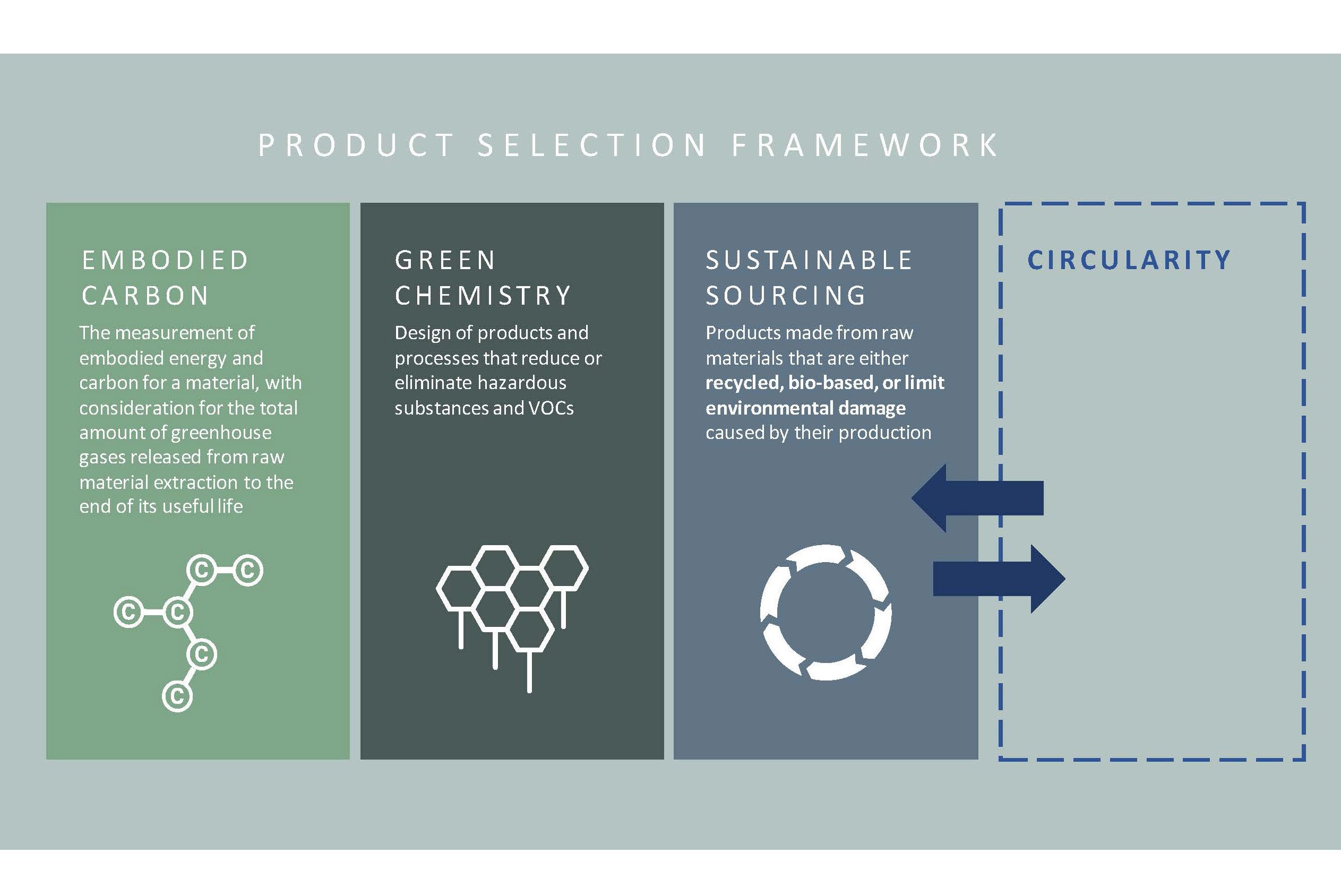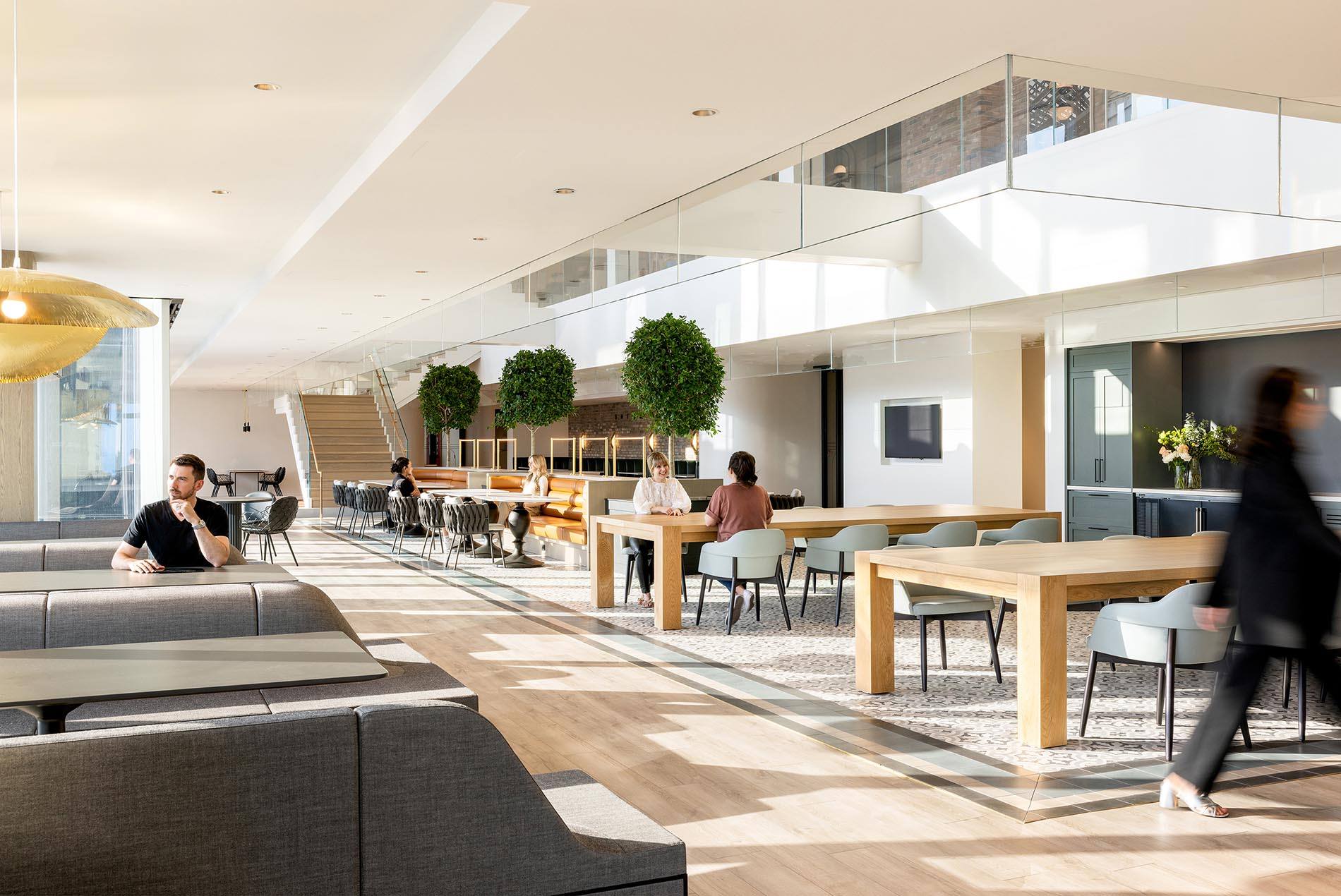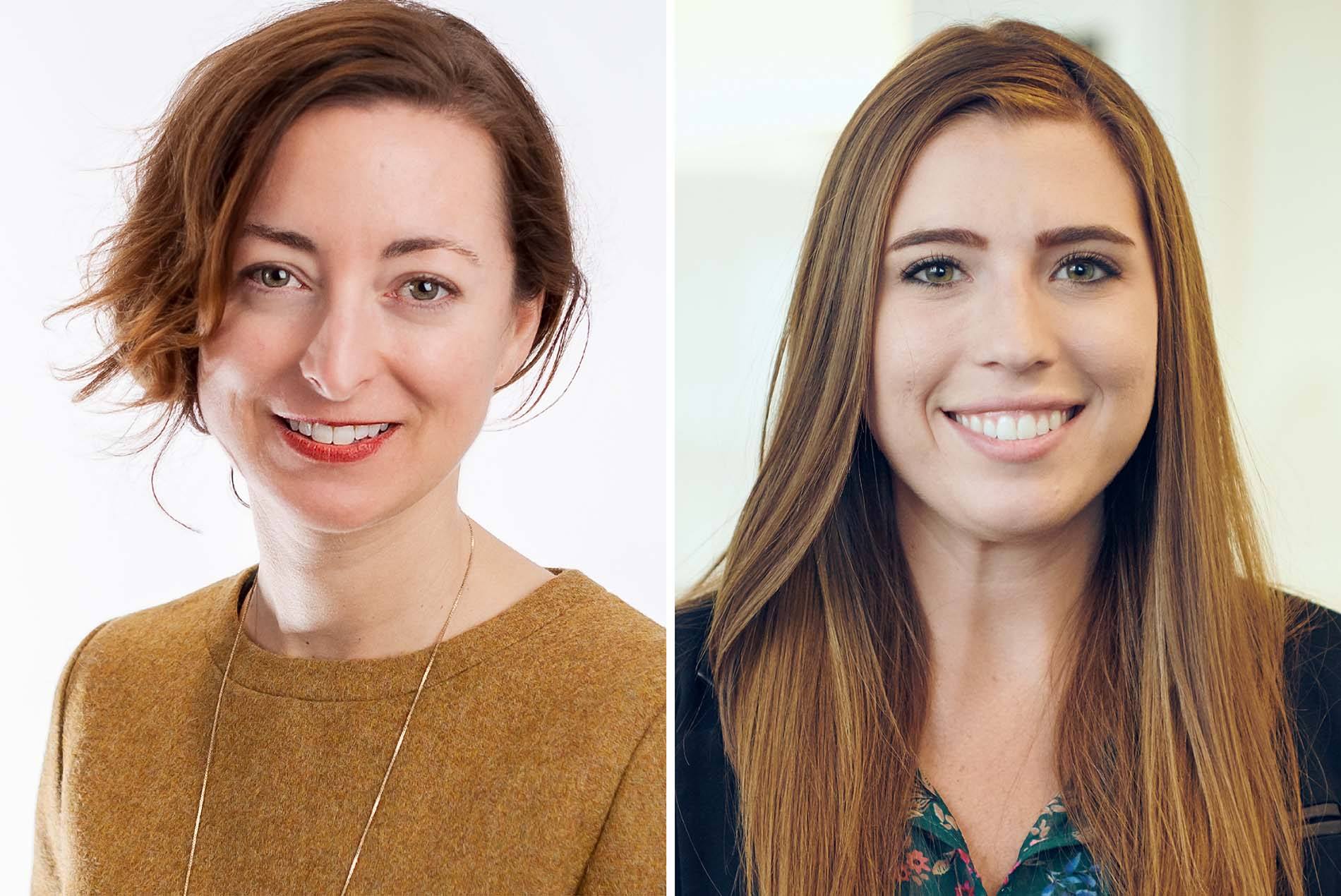Over the past few years, HOK’s Interiors group has embarked on a journey to transform sustainability in interior design, focusing on healthier building materials. This global initiative, led by a team of over 30 interior design liaisons and advisors, aims to improve material selections across all HOK offices.
Though they continue expanding their efforts, the priority has been on tracking embodied carbon, green chemistry and sustainable sourcing for products specified on all interior projects, regardless of whether the project is tracking for LEED, WELL, BREEAM or Fitwel certification.
The 2022 performance for sustainable interior design materials in HOK’s projects shows:
- 55% of materials had Environmental Product Declarations (EPDs) measuring embodied carbon
- 43% had third-party healthy materials certifications
- 78% were certified as low-emitting
- 43% included recycled content
- 84% used FSC-certified wood
By setting stringent internal criteria for material health, putting in place processes for doing so and being transparent about the results, HOK’s Interiors group hopes to influence designers and manufacturers to adopt more sustainable practices.
We spoke with two leaders driving this effort: Christine Vandover, senior project interior designer in HOK’s New York studio, and Elizabeth Baxter, senior sustainable design specialist in Houston. Read on to learn how they’re working to change designer habits and drive an industry-wide shift.
What exactly is HOK doing to improve sustainability in interiors?
Christine: For the past three years, we have been collecting data to track sustainability metrics for interior materials. We’ve set specific goals around embodied carbon, green chemistry and sustainable sourcing for our 26 global offices. This year, we’re also tracking bio-based content.
We began by developing a materials tracking tool to embed into our design process. We then launched it across the Interiors practice through a series of workshops to educate HOK’s designers and specifiers on best practices for healthy materials and how to use the tracker. It doesn’t matter whether we’re designing a project for green certification—we want to do this for all of them. Everyone should have access to healthy spaces.
We hope to track more than 130 projects in 2023—a big increase from 34 in 2021.
Elizabeth: The spaces we design and the products we choose affect human health, climate change and social equity—the three pillars of sustainability. We’re systematically specifying more environmentally responsible products and finish materials, such as floor coverings, paints and fabrics.
While we have yet to meet all our targets, our progress is encouraging. Our goal is for the teams designing every HOK project—from a 5,000-sq.-ft. tenant fitout to a 500,000 sq.-ft. new building—to select and track healthy, sustainable materials. We’re doing this not just because our clients ask for it, but because it’s who we are. Sustainability is a huge part of HOK’s values.
How does materials tracking change the habits of HOK’s designers?
Christine: It teaches our designers to evaluate materials through a sustainability lens from the start. Along with aesthetics, they consider factors like embodied carbon, chemistry, sourcing and circularity. This approach improves the outcomes without adding extra costs for clients.

How are you approaching manufacturers about this initiative?
Christine: We’ve held over 40 meetings with companies like Steelcase, Shaw and Herman Miller to share our goals with their sustainability, sales and marketing leadership. For some of them, we’ve conducted training sessions with their firmwide sales teams to help them understand what we’re trying to do. We also learn from their sustainability initiatives.
Elizabeth: As HOK and other design firms emphasize the importance of healthy materials, we’re seeing more manufacturers integrate sustainability into their processes and products. And these products are competitively priced with more sustainable options.
How are you engaging with other design firms to advance sustainability in interiors?
Elizabeth: We join our competitors in panel discussions and share information with each other. This knowledge isn’t something that we consider proprietary or that we’re trying to gatekeep. We all want materials to go in a more sustainable direction for the betterment of the industry. The important thing is we’re all moving forward together.
What are your next steps in expanding HOK’s healthy materials tracking?
Christine: Circular design is one of the next frontiers for sustainable interiors. This includes reuse, refurbishment and detailing for disassembly. It allows for end-of-life considerations so products can re-enter the supply chain instead of ending up in landfills. We’re integrating a site visit checklist into our process to help designers identify and evaluate opportunities to reuse various elements. Since furnishings are generally not technologically complex, interior spaces are ideal targets for circularity. It’s much easier to reuse chairs and flooring than for tech manufacturers to figure out how to repurpose obsolete chips. We’re also working with our specification writers, manufacturers and general contractors to get the proper language in HOK’s specifications to maximize reclamation in the demolition phase of a project.
We’ve also hired an experienced firmwide material and product resource manager who starts later this year. This person will provide great expertise in researching, evaluating and advising our teams on sustainable, code-compliant product specifications.
Elizabeth: For 2024, we’re looking at specifying only materials with third-party health certifications. We also want to align our framework with Mindful Material’s Common Materials Framework for better decision-making.
We’ll continue being transparent about our objectives and results. This keeps us accountable and hopefully inspires others in the industry to join us on this journey.
